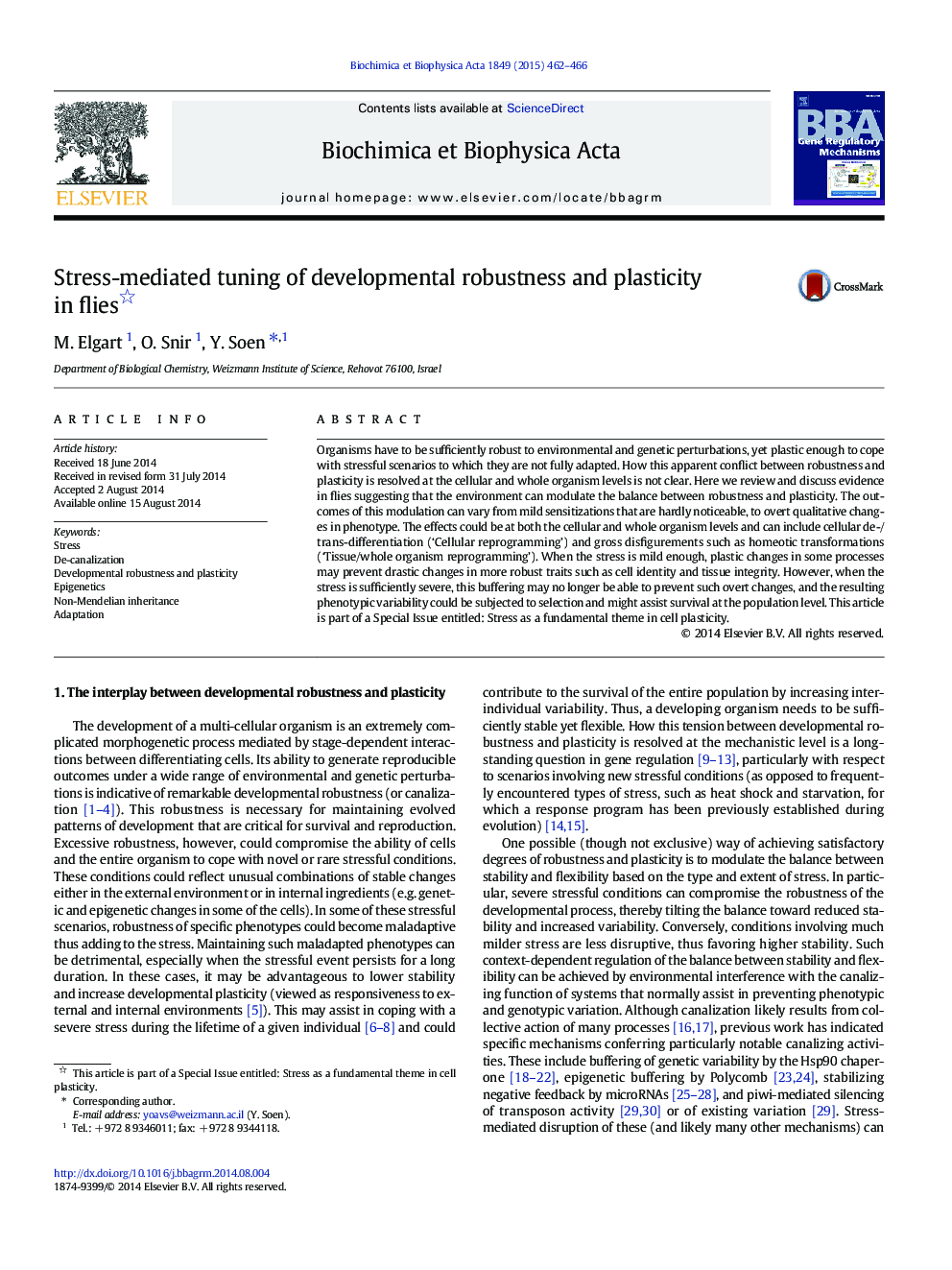| Article ID | Journal | Published Year | Pages | File Type |
|---|---|---|---|---|
| 1946423 | Biochimica et Biophysica Acta (BBA) - Gene Regulatory Mechanisms | 2015 | 5 Pages |
•Relations between stress, developmental plasticity, and robustness are insufficiently understood.•Here we review and discuss relevant examples and mechanisms in flies.•We suggest that stress can mediate the balance between robustness and plasticity.•We argue that plastic responses may act to prevent changes in more robust traits.
Organisms have to be sufficiently robust to environmental and genetic perturbations, yet plastic enough to cope with stressful scenarios to which they are not fully adapted. How this apparent conflict between robustness and plasticity is resolved at the cellular and whole organism levels is not clear. Here we review and discuss evidence in flies suggesting that the environment can modulate the balance between robustness and plasticity. The outcomes of this modulation can vary from mild sensitizations that are hardly noticeable, to overt qualitative changes in phenotype. The effects could be at both the cellular and whole organism levels and can include cellular de-/trans-differentiation (‘Cellular reprogramming’) and gross disfigurements such as homeotic transformations (‘Tissue/whole organism reprogramming’). When the stress is mild enough, plastic changes in some processes may prevent drastic changes in more robust traits such as cell identity and tissue integrity. However, when the stress is sufficiently severe, this buffering may no longer be able to prevent such overt changes, and the resulting phenotypic variability could be subjected to selection and might assist survival at the population level. This article is part of a Special Issue entitled: Stress as a fundamental theme in cell plasticity.
